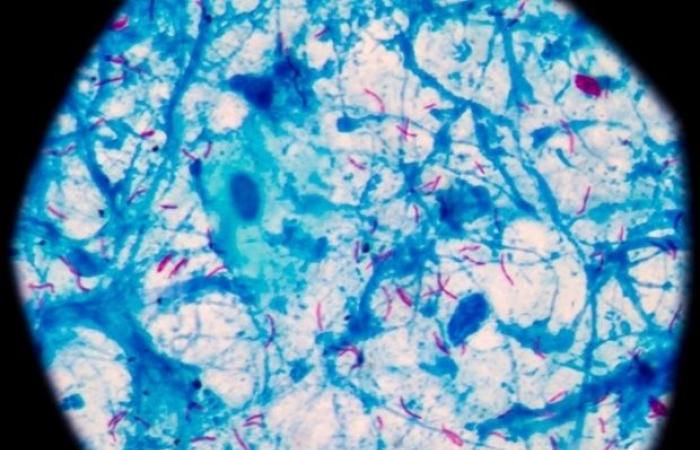The rod-shaped tuberculosis (TB) bacteria, which the World Health Organization has once again ranked among the world’s deadliest infectious diseases, is the first single-celled organism ever observed to maintain a rate of constant growth throughout its life cycle. These results, reported by researchers at Tufts University School of Medicine on November 15 in the journal Natural microbiologyoverturn fundamental beliefs of bacterial cell biology and suggest why the deadly pathogen so easily outwits our immune systems and antibiotics.
“The most fundamental thing we can study about bacteria is how they grow and divide. Yet our study reveals that the tuberculosis pathogen follows a completely different set of rules than easier-to-study model organisms,” said research scientist Bree Aldridge. professor of molecular biology and microbiology in the School of Medicine and professor of biomedical engineering in the School of Engineering, as well as one of the co-senior authors of the paper with Ariel Amir of the Weizmann Institute of Science .
TB bacteria are successful in surviving in humans because certain parts of the infection can evolve rapidly within their host, allowing these outliers to avoid detection or resist treatment. If someone has tuberculosis, it takes months of various antibiotics to cure, and even then this approach is only successful in 85% of patients. Aldridge and colleagues hypothesize that gaps in our understanding of the fundamental biology behind this phenomenon have hindered the development of more effective treatments.
However, getting answers proved to be slow and painstaking work. School of Medicine postdoctoral fellow Christin (Eun Seon) Chung, one of the first authors of the paper, spent three years in a specialized facility equipped to manage high-risk pathogens by observing how cells behave individual tuberculosis. Since tuberculosis bacteria double approximately every 24 hours (compared to 20 minutes for several model bacterial species), Aldridge’s team had to develop and deploy new microscopy methods to film the microbe over week-long periods. . Chung analyzed the images and manually tracked each TB bacteria and its progeny, because they are also notoriously small and prone to moving around, so automated analysis could not be used.
These experiments showed that tuberculosis bacteria do not follow expected cell growth patterns. In other bacterial species, growth is exponential, meaning cells grow more slowly when they are smaller. For tuberculosis bacteria, growth rates can be the same whether they are newly born (and small) or late in their cell cycle and about to divide.
This is the first organism reported capable of doing this. TB’s behavior challenges basic bacterial biology because ribosomes, which are sites of protein synthesis in the cell, are thought to determine cell growth rates, but our work suggests something else might occur in the tuberculosis bacteria, raising new questions about its growth. control. »
Christin (Eun Seon) Chung, Postdoctoral Fellow, School of Medicine, Tufts University
In addition to reporting that there is wide variation in growth behaviors between individual bacterial cells, the team discovered another new growth behavior of tuberculosis bacteria: they can also start growing from one or the other end after their birth. This was unexpected since related bacteria only start growing from the opposite end of where they pinched off their parent cell during division.
Together, the observations reveal that TB microbes use alternative strategies to increase variability among their offspring, challenging previous assumptions based on faster-growing, more uniform model organisms. Aldridge says the study will help his lab and other research teams better understand and exploit these mechanisms for therapeutic purposes.
“A lot of basic research in microbiology is done on fast-growing model organisms, and even though they are models for a reason, that doesn’t make them representatives of other types of bacteria,” Aldridge said. “There is an enormous diversity of life that we do not study at a fundamental level and this work demonstrates why we need to study the pathogens themselves. »
Prathitha Kar of Harvard University, the paper’s other co-first author, and Maliwan Kamkaew, formerly of Tufts University School of Medicine, also contributed to the work.






